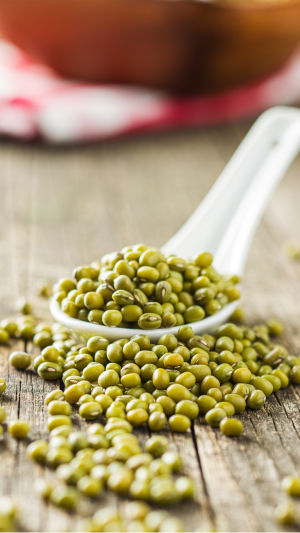Beans have been a dietary staple globally for centuries, offering not only substantial sustenance but also a wide array of flavors and textures.
Among the myriad varieties available, soybeans, mung beans, and red beans stand out for their distinctive characteristics and profound effects on both culinary experiences and nutritional well-being.
Soybeans, scientifically known as Glycine max, are a powerhouse of nutrients and have played a pivotal role in Asian cuisines for centuries. These small, beige legumes are renowned for their versatility, making appearances in various dishes such as tofu, soy milk, and edamame.
The high protein content in soybeans makes them a crucial element in vegetarian and vegan diets, serving as a viable alternative to animal-based proteins. Additionally, soybeans are rich in essential amino acids, iron, and calcium, contributing to overall bone health and muscle development.
Moving on to mung beans (Vigna radiata), these small, green legumes are a common sight in many Asian dishes. Mung beans are often sprouted to enhance their nutritional profile, providing a fresh and crunchy texture. Sprouted mung beans are not only a culinary delight but also a rich source of antioxidants, vitamins, and minerals. The beans contain enzymes that aid digestion, making them a valuable addition to meals for those seeking digestive health. From soups to salads, mung beans lend a unique texture and a mild, slightly sweet flavor that elevates the overall dining experience.
Red beans, or adzuki beans (Vigna angularis), are a staple in East Asian and Southeast Asian cuisines. Characterized by their small size and reddish-brown hue, these beans have a slightly sweet taste, making them a favorite ingredient in desserts. Red beans are a fantastic source of dietary fiber, promoting a healthy digestive system and aiding in weight management. They are also rich in folate and other B-vitamins, contributing to cardiovascular health and overall well-being. The vibrant color of red beans adds not only visual appeal but also a delightful taste to a variety of dishes, ranging from savory stews to sweet pastries.
When comparing the three beans, their distinct qualities shine through in both culinary applications and nutritional benefits. Soybeans, with their high protein content and versatility, are a cornerstone in plant-based diets, providing a sustainable protein source. Mung beans, celebrated for their sprouts and digestive benefits, offer a refreshing addition to salads and stir-fries. Lastly, red beans, known for their sweet undertones, are a versatile ingredient that can be used in both savory and dessert preparations.
Beyond their individual attributes, these beans can also complement each other in creating balanced and nutritious meals. A combination of soybeans, mung beans, and red beans in a dish can offer a spectrum of flavors, textures, and health benefits. This harmonious blend not only enhances the culinary experience but also provides a well-rounded nutritional profile, incorporating essential amino acids, vitamins, and minerals.
The effect of different beans, namely soybeans, mung beans, and red beans, goes beyond mere sustenance. These legumes have a profound impact on both the culinary world and nutritional well-being. Whether enjoyed individually for their unique characteristics or combined to create a symphony of flavors, these beans contribute to a wholesome and delightful dining experience. Embracing the diversity of beans not only adds richness to our plates but also promotes a healthier and more sustainable approach to eating.





